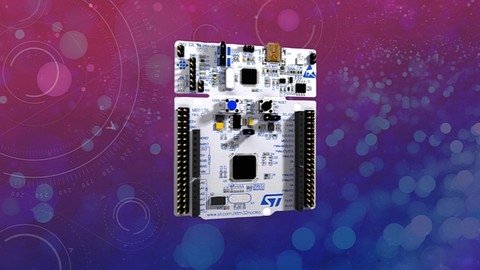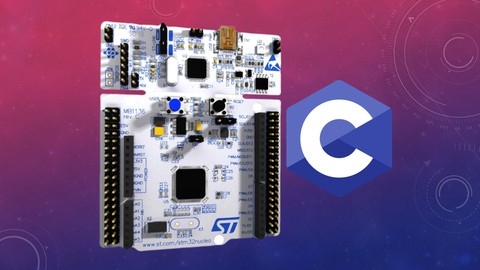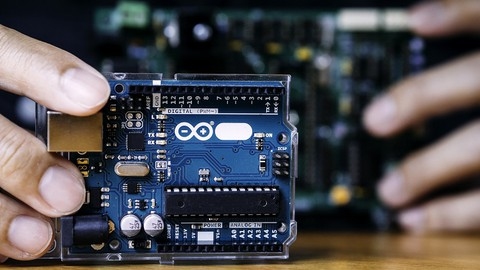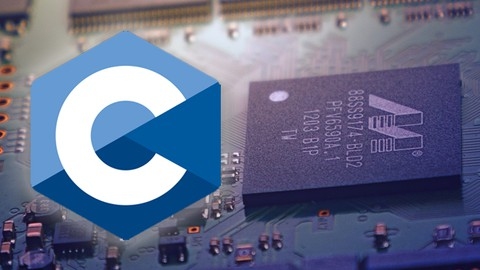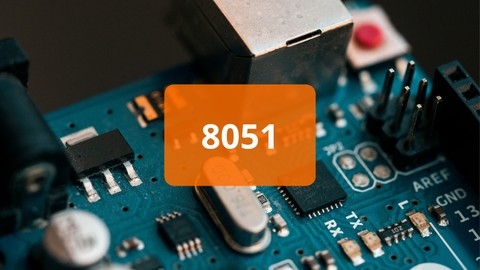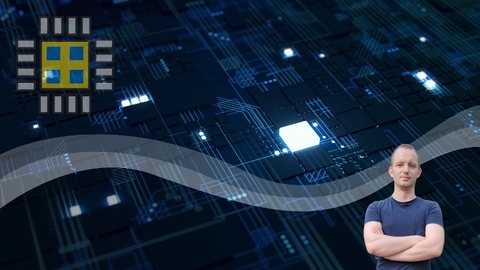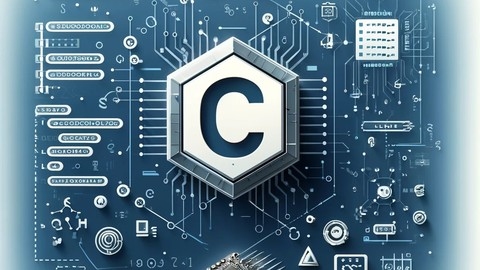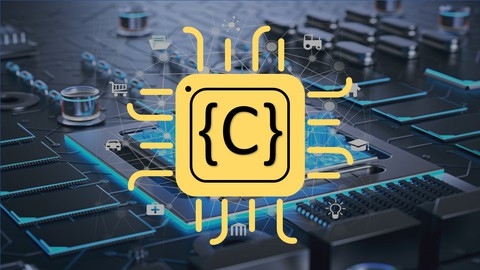Embedded C programming is a specialized form of C programming used to develop software for embedded systems, which are electronic devices with a dedicated function.
These systems are found everywhere, from smartphones and cars to industrial robots and medical devices.
Mastering embedded C allows you to control hardware, optimize performance, and create innovative solutions for a wide range of applications.
Finding the right embedded C course on Udemy can be tricky, with so many options vying for your attention.
You’re looking for a course that covers the fundamentals, provides practical projects, and helps you build a solid understanding of the embedded world.
For the best embedded C course overall on Udemy, we recommend Microcontroller Embedded C Programming: Absolute Beginners.
This course excels by taking you from zero programming experience to confidently building your own embedded projects.
It starts with C programming basics and seamlessly transitions into microcontroller programming, using the popular STM32F407 microcontroller.
You’ll learn to control LEDs, read buttons, and even build your own GPIO drivers, all while gaining a deep understanding of embedded C concepts.
While Microcontroller Embedded C Programming: Absolute Beginners is our top pick, there are other great embedded C courses on Udemy tailored to different learning styles and goals.
Keep reading to discover our recommendations for beginner-friendly introductions, advanced courses focusing on specific microcontrollers, and courses designed to prepare you for a career in embedded systems.
Microcontroller Embedded C Programming: Absolute Beginners
This course guides you from the basics of C programming to the intricacies of embedded systems, making it ideal if you’re new to programming or looking to expand your skills into the embedded domain.
The course begins with an introduction to C programming, highlighting its significance in embedded systems.
You’ll explore the history of C and its standardization, setting a strong foundation.
The journey continues with setting up your development environment, where you’ll install the STM32CubeIDE, compatible with Windows, Linux, and Mac.
This IDE is pivotal for programming STM32 microcontrollers, a key focus of the course.
As you progress, the course covers fundamental programming concepts like data types, variables, and operators through engaging exercises, including the iconic “Hello World”.
These initial steps are crucial for grasping the basics of C programming.
A significant portion of the course is dedicated to understanding and programming microcontrollers, specifically the ARM Cortex M4.
You’ll learn to perform tasks such as LED manipulation and button input reading, providing a hands-on experience that bridges theory with practical application.
Advanced topics are not overlooked.
You’ll delve into storage classes, functions, pointers, and floating-point data manipulation.
The course also teaches you how to interact with users through input, manage arrays and strings, and utilize pre-processor directives for efficient coding.
Embedded C coding exercises are a highlight, offering real-world applications of your learning.
From controlling LEDs to keypad interfacing, these exercises not only reinforce your knowledge but also prepare you for creating your own embedded projects.
The course thoroughly covers ‘volatile’ and ‘const’ type qualifiers, bitwise operators, looping, structures, unions, and bit-fields.
These concepts are essential for writing effective embedded C code, managing data, and understanding microcontroller architecture.
Mastering Microcontroller and Embedded Driver Development
This course is a comprehensive exploration of embedded systems, using the popular STM32F4xx microcontroller as its foundation.
It takes you from the basics of microcontrollers, guiding you through the development of your own drivers.
You’ll begin by familiarizing yourself with the STM32CUBEIDE, a powerful IDE, and learn the fundamentals of project creation and debugging with a classic “Hello World” example.
From there, you’ll delve into essential concepts like memory mapping, bus interfaces, and clocking systems.
Understanding these at a hardware level is crucial for efficient code development, and this course provides a strong foundation.
Next, you’ll explore GPIO (General Purpose Input/Output) pins, the building blocks for interacting with the outside world.
You’ll learn to configure these pins for input and output, control LEDs, read buttons, and implement interrupts.
The course culminates in the creation of your own GPIO driver, giving you complete control over your microcontroller’s I/O.
The course then focuses on essential communication protocols: SPI, I2C, and UART.
You’ll learn their inner workings, their configuration within the STM32 environment, and the development of drivers for each.
You’ll gain practical experience sending and receiving data across these buses, and learn how to handle interrupts for real-time communication.
Finally, the course delves into real-time applications with real-time clocks (RTC) and LCD displays.
You’ll learn to interface with a DS1307 RTC chip, set the time and date, and display this information on an LCD screen.
This hands-on experience prepares you for more complex embedded projects that require precise timing and interaction with the outside world.
Arduino Embedded C With Electronics/Schematics/PCB
This comprehensive course is your gateway to the world of embedded programming using the popular Arduino platform.
This course starts by laying a strong foundation in electronics, introducing you to fundamental concepts like voltage, current, and resistance.
You’ll then jump right into practical application, building your first circuits on a breadboard and learning to program an LED to blink.
Beyond the basics, you’ll dive into programming push buttons, understanding diodes, and even learn how to interrupt the Arduino.
This course doesn’t stop at programming; it equips you to confidently work with a wide range of electronic components including capacitors, potentiometers, and LCD displays.
You’ll also learn how to use essential tools like multimeters for troubleshooting.
The course then guides you through working with analog signals, understanding inductors, and culminates in a fun “Whack A Mole” game project.
You’ll learn the fundamentals of voltage regulators and delve into the world of circuit design, creating your own schematic and PCBs using the KiCad software.
The course finishes with a bonus section that takes your skills to the next level, showcasing how to implement real electronics on real hardware.
Intro to C Programming for Aspiring Embedded Developers
This course offers a solid foundation in embedded programming, starting with the essential C programming language.
You’ll get a handle on the core concepts – variables, data types, arrays, and structs – that form the bedrock of any embedded system.
The course doesn’t shy away from the details, taking you through bitwise arithmetic, which is crucial for understanding how embedded systems work at a low level.
You’ll then explore control flow, building upon the fundamentals with conditional statements, switch statements, and loops.
These are the building blocks that let you create programs that respond to different situations and repeat tasks – skills vital for controlling the behavior of embedded devices.
Functions are introduced, giving you the power to organize your code into reusable blocks, making it easier to manage larger projects.
Finally, you dive into the world of embedded programming itself.
You’ll learn about the architecture of embedded systems, the role of microcontrollers, and how to use C to interact with hardware.
The hands-on example of blinking an LED provides a concrete illustration of how software controls the real world.
This practical approach solidifies your understanding of the relationship between software and hardware, a key concept in embedded development.
This course is a great starting point for anyone wanting to delve into the exciting world of embedded systems.
It provides a strong foundation in C and introduces the core concepts of embedded programming with practical examples that help you solidify your understanding.
Embedded Systems with 8051 Micro Controller using Embedded C
You’ll start by gaining a solid foundation in the fundamentals of embedded systems and the architecture of the 8051.
The course then guides you through setting up your development environment using the widely-used Keil IDE, ensuring you’re ready to tackle hands-on projects.
You’ll dive into the practical aspects of interfacing the 8051 with a variety of peripherals, including LEDs, switches, DC motors, and relays.
You’ll master essential programming techniques such as loops and timers to achieve precise control over these components.
You’ll also learn how to interact with LCD displays, creating interactive user interfaces for your embedded projects.
The course delves into serial communication, enabling you to connect your 8051-based systems to other devices like computers.
You’ll explore the important concept of Analog-to-Digital Conversion (ADC) using the LM35 temperature sensor, allowing you to measure real-world data and integrate it into your embedded designs.
You’ll also learn about interrupts, a crucial mechanism for handling external events efficiently and making your systems more responsive.
The course culminates with several engaging real-world projects, demonstrating the practical application of the skills you’ve learned.
You’ll learn to control relays using Bluetooth, a valuable skill for building wireless control systems.
You’ll also explore program downloading techniques using the Nuvoton ICSP Programmer and FlashMagic for the P89v51RD2 microcontroller, equipping you with the necessary tools to bring your embedded projects to life.
This course is well-structured and provides a thorough introduction to embedded systems using the 8051 microcontroller.
While it doesn’t delve deeply into specific advanced topics, it offers a solid foundation for those seeking to explore the exciting world of embedded systems development.
Embedded C Programming Design Patterns
This course provides a comprehensive exploration of design patterns within the context of embedded C programming.
You’ll delve into a variety of patterns, categorized into four key areas: creational, structural, behavioral, and concurrency.
Within the realm of creational patterns, you’ll learn how the Factory Pattern empowers you to create objects without being tied to their specific types, a powerful tool when working with diverse hardware configurations.
The structural patterns section examines how the Callback Pattern enables you to gracefully handle events and responses within your code, enhancing responsiveness and flexibility.
Moving onto behavioral patterns, you’ll discover the Return Value Pattern, a technique crucial for communicating success or failure within functions.
This pattern allows for more robust error handling and clear communication within your embedded code.
Finally, you’ll dive into the world of concurrency patterns, essential for crafting efficient code that seamlessly manages multiple tasks within embedded systems.
Here, you’ll encounter patterns like the Semaphore Pattern, which provides granular control over access to shared resources, ensuring smooth operation in multithreaded environments.
You’ll also explore the Mutex Pattern, which guarantees that only one task can access a specific resource at any given time, preventing data corruption and ensuring predictable behavior.
By mastering these design patterns, you’ll gain a profound understanding of how to write elegant, efficient, and reliable embedded C code.
This course provides the necessary knowledge and tools to elevate your embedded programming skills and tackle complex challenges with confidence.
C Programming Basics For Microcontrollers & Embedded System
You’ll start by mastering the basics, including writing your first program, understanding variables, operators, and loops.
The course also dives into numbering systems, a crucial concept in computer science that lays the foundation for understanding how data is represented in computers.
Moving beyond the fundamentals, you’ll delve into using C for microcontroller projects.
The course covers essential techniques like handling digital inputs and creating delay loops, enabling you to build interactive embedded systems.
You’ll also learn helpful tips and tricks to make your projects more efficient and robust.
The course doesn’t stop at C. It offers a glimpse into C# with Microsoft Visual Studio.
You’ll learn to set up your development environment, write basic console applications, and even create your first C# project.
This exposure to a different programming language will help you understand the similarities and differences between C and C#, broadening your programming horizons.
By completing this course, you’ll gain the skills to write your own C programs for microcontrollers and develop a solid understanding of the world of embedded systems.
The combination of C fundamentals, microcontroller programming, and a touch of C# makes this course a great stepping stone for those interested in building their own embedded systems or exploring the world of software development.
Master C and Embedded C Programming- Learn as you go
This course takes a systematic approach, starting with the fundamentals and gradually introducing more advanced concepts.
You’ll begin by understanding the basics of embedded systems and why C is the language of choice for these applications.
The course explores the differences between standard C and Embedded C, a crucial distinction for developing software that interacts with hardware like microcontrollers.
Setting up your development environment is made easy with guidance on installing Code::Blocks, a user-friendly IDE.
You’ll dive into core C programming concepts like variables, data types, and escape sequences, understanding how they work under the hood.
The course explains how numbers are stored in memory using binary, decimal, and hexadecimal systems, and introduces you to ASCII, the standard encoding system for characters.
To build programs that make decisions, you’ll learn about conditional execution using “if” statements, “else” statements, and “switch” statements.
Loops, like “while”, “for”, and “do…while”, help you streamline code by repeating sections.
You’ll then move on to functions, which allow you to create reusable blocks of code, making your programs more organized and efficient.
Pointers are a powerful tool that enables you to directly manipulate memory addresses.
The course explains how they are used to pass information to functions by reference.
You’ll also learn about arrays, which are essential for storing collections of data, and how to pass them to functions.
The course emphasizes the importance of the “volatile” keyword in embedded systems, highlighting its role in handling hardware registers that can change unexpectedly.
Structures, user-defined data types for grouping variables, are introduced, providing a structured approach to data organization.
You’ll also explore various operators like ternary, logical, and bitwise operators, which are essential for different programming tasks.
Finally, you’ll delve into preprocessors, including macros and conditional compilation.
This will give you a clear understanding of how your C code is translated into machine instructions by the compiler.
